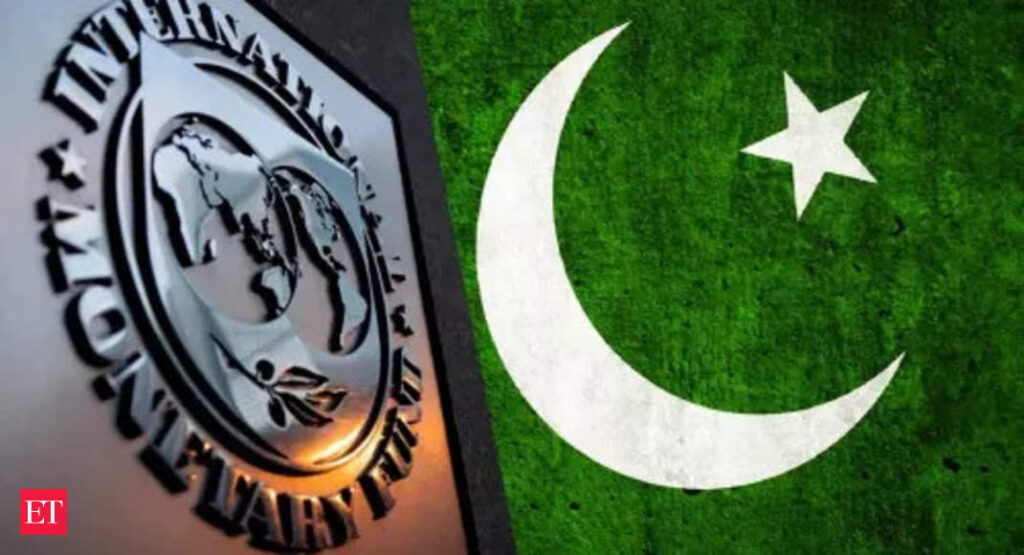
By Anjan Roy
The International Monetary Fund (IMF) has formally cleared a bail-out package for Pakistan yesterday of $3 billion. The bail-out facility was worked out after protracted negotiations with the country when at times the package looked increasingly uncertain.
No one will ask for a IMF ail out unless the situation is grim. Pakistan’s is no exception, but it is at the edge of a cliff. Mere numbers do not convey how desperate the situation is. But even then, the figures speak for themselves.
The real GDP of Pakistan is hardly growing for the past few years. This year is shrinking by close to half percent. In the best possible situation, with the IMF package and reforms pushed through, the economy is hopefully hitting 2.5 per cent growth.
What it most distressing is the trend in consumer prices. At the current estimate, prices for ordinary consumer items are rising by 34 per cent on top of average rise in consumer prices by 22 per cent last year. Hopefully, the price rise should decelerate but not expected to rise any less than 16-17 per cent in 2024.
Government finances are less spoken the better, given the profligate ways these were managed. On conservative estimates, fiscal deficit is at around 8 per cent of GDP, which is high even in normal circumstances. Unless there is extensive taxation recast, these should remain elevated next year and year after that.
Government debt and government guaranteed debts account for as high as 81-82 per cent, provided that accounting has been done fairly honestly. Government debt alone is 74 per cent of GDP and external debt stands at 40 per cent. With exports meagre this is clearly unsustainable, if anything on account of the debt servicing balance alone.
In such a situation, private sector would be squeezed. There is crowding out effect of the huge burden of government debt. Private credit is hardly expanding, at 1 per cent year on year growth. It is clear there is no investment from the Pakistani private sector.
Nor is foreign direct investment flowing in to shore up sagging domestic capital expenditures. FDI is less than half percent of GDP.
As usual, the IMF bail-out package comes with “conditionalities” and policy reforms prescriptions, including stiff corrections in energy prices, cutting down fiscal deficits and market driven exchange rate for the Pakistan rupee. These are to say the least difficult to achieve in the current economic situation of the country.
The policy reforms which are being insisted upon as a condition for granting the loan will focus on, firstly, implementation of the FY24 budget to facilitate Pakistan’s needed fiscal adjustment and ensure debt sustainability, while protecting critical social spending.
Secondly, IMF insists on a return to a market-determined exchange rate and proper FX market functioning to absorb external shocks and eliminate FX shortages; thirdly, an appropriately tight monetary policy aimed at disinflation; and lastly, further progress on structural reforms, particularly with regard to energy sector viability, SOE governance, and climate resilience.
These will mean raising interest rates by the Pakistan central bank, raising prices for petrol, diesel and other fuels, restructuring the public sector units drastically including labour retrenchment, and raising the price of electricity and other fuels to cover costs.
While currently Pakistan is seeing an elevated price line, these reforms initially could further push prices and lead to wide scale resentment among the people. Already, Pakistan is passing through extremely volatile political situation, pushing these reforms could further queer the pitch.
Immediately, IMF will disburse only $1.2 billion and the balance would be released as part of its economic reforms package is implemented.
Kristalina Georgieva, managing director of IMF and chair of the committee which examined Pakistan’s bail-out package, observed that the standby facility “offers Pakistan an opportunity to regain macroeconomic stability and address these imbalances through consistent policy implementation.”
The IMF policy prescriptions are meant to open up the Pakistan economy and introduce reforms for giving freer play to market forces. The foreign exchange reforms, for example, play a critical role in adjusting domestic economy to external developments.
The facility has come at a particularly difficult juncture for Pakistan. Devastating floods last year and wrong policies when the external economic situation was difficult, resulted in large and unsustainable fiscal deficit, rising prices and huge external deficits.
These combined to erode the country’s reserves and increased the vulnerability to external shocks. There is no doubt implanting the IMF reforms agenda is not an easy job in an economy already facing multiple shortages and difficulties.
The IMF prescriptions suggest raising the tax retest bring about some semblance of balance in government finances. The prescribed budget for 2024 assumes a small surplus, against a gaping deficit in the current year. No out any moves to increase tax rates would be extremely unpopular.
India had faced a similar situation in 1991 following years of lax economic management. However, a determined bid to bring about policy reforms and further play to market forces had brought about radical changes in the economy and sustained growth.
Since then, India did not have to look back. Will Pakistan be able to bite the bullet. (IPA Service)
The post Is Pakistan Government Politically Prepared To Implement IMF Proposed Reforms? first appeared on IPA Newspack.


